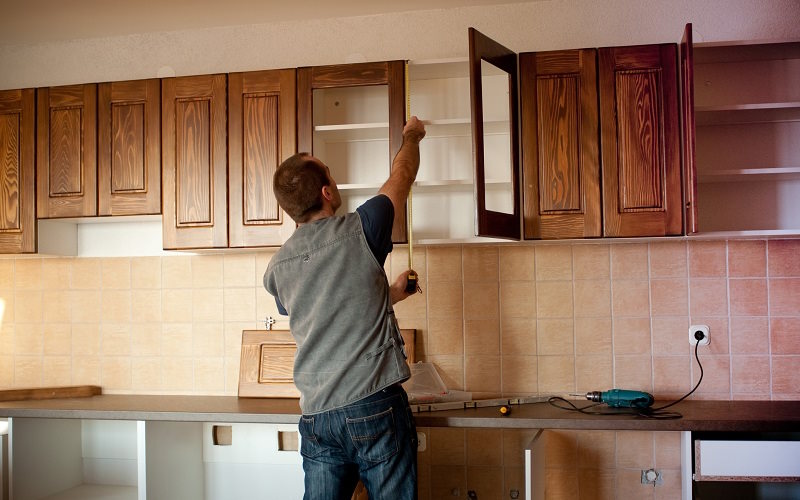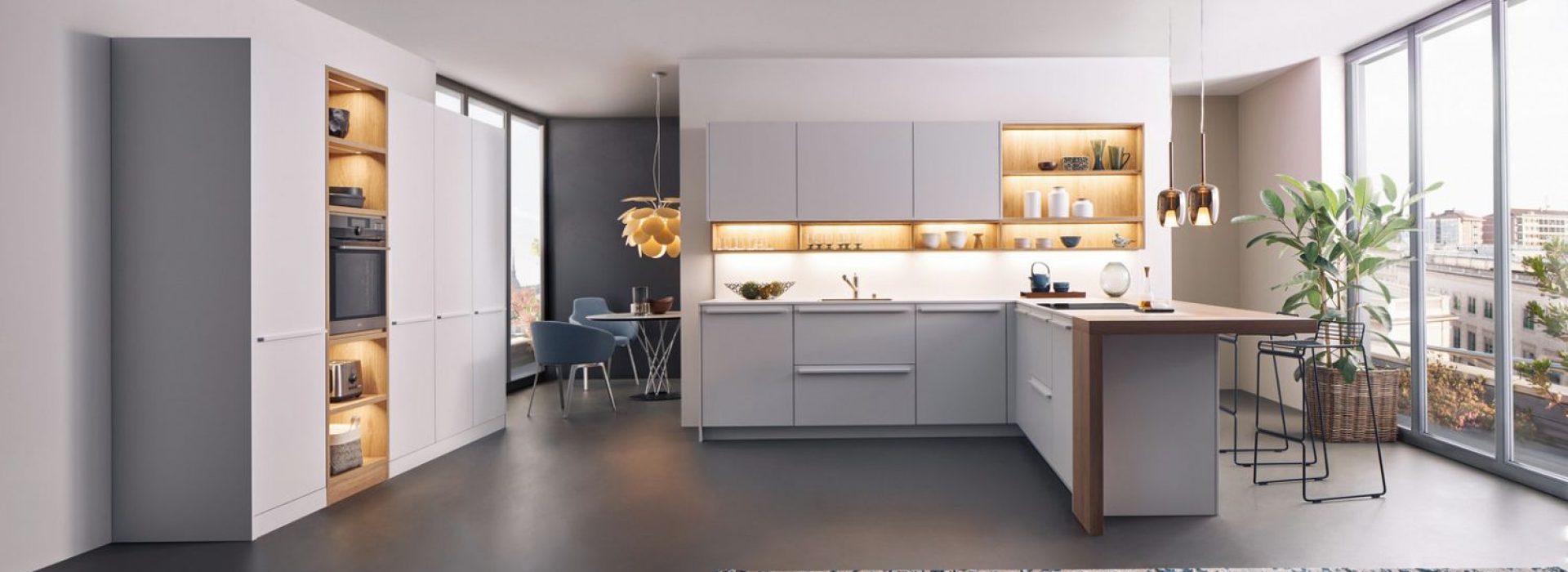
One of the positive aspects of kitchen renovations is that there is certainly no lack of choice when it comes to your options. You could simply make a few slight improvements to tidy your kitchen up or go all out and have cabinet makers design and install a completely new kitchen design, including worktops and the latest appliances that you may have seen in other kitchens or showrooms.
A choice that many homeowners often mull over is whether to have new kitchen cabinets or have their existing cabinets refaced to give them a new and fresh appearance. If you are wondering which is right for you, that question will be answered based on many things, such as the condition of your existing kitchen cabinets and your budget.
In truth, there are advantages and disadvantages to either replacing or refacing your kitchen cabinets, so we thought it would be useful if we helped you understand what they were. As such, we have outlined below the pros and cons of refacing or replacing kitchen cabinets. We hope it helps.
Refacing Kitchen Cabinets
Refacing kitchen cabinets means replacing the outer face or skin of the cabinet. With refacing, the door might be replaced, but the main structure remains in place.
PROS
Costs Less: It stands to reason that refacing your existing kitchen cabinets is going to be a cheaper option than having new kitchen cabinets manufactured and fitted in your kitchen.
Better for the Environment: The amount of waste and debris that is created by refacing kitchen cabinets is going to be significantly less than kitchen renovations which involve all the existing cabinets being removed.
Less Disruption and Mess: Kitchen renovations, by their very nature, create disruption in your home and generate a lot of debris which will be the case if the kitchen cabinets are to be replaced. Conversely, they will both be considerably less with refacing.
CONS
All Kitchen Cabinet Structures Must Be Intact: You do not need to be an experienced cabinet maker to know that if you are going to reface kitchen cabinets, then the structure of the main cabinet must be intact and free of any major damage.
Kitchen Cabinets Remain In The Same Place And Are The Same Size Too: Often, the entire point of kitchen renovations is to redesign and reconfigure kitchens for more storage space and easier access. With refacing, everything remains in the same location, so storage space and access remain as is.
Cabinet Interiors Are Not Renewed: Bear in mind, with refacing, it is the exteriors of the kitchen cabinets that are being renewed. So, if your kitchen cabinet interiors are looking less than pristine and even show signs of damage, unfortunately, refacing will not change that.
Replacing Kitchen Cabinets
Replacing cabinets means removing the old cabinets and installing new ones, which can be prefabricated or made bespoke by kitchen cabinet makers.
PROS
You Can Add More Storage Space: You can request that your cabinet makers create larger and more spacious kitchen cabinets for your new kitchen which will give you more storage space when your kitchen renovation is complete.
You Can Completely Reconfigure Your Kitchen’s Layout: With new kitchen cabinets, you can discuss with your kitchen design team where each of them is to be positioned, which gives you the chance to completely reconfigure your kitchen’s layout to make it more convenient for you.
Adds Significant Value To Your Home: Evidence shows that homes with professionally designed kitchens that have high-quality cabinets will attract higher prices than those that do not, and they sell quicker too.
CONS
Require A Larger Financial Investment: It should not surprise you that the cost of replacing kitchen cabinets, especially those made by skilled cabinet makers, will cost more than simply having cabinets refaced.
Disruption And Mess During Installation: Fitting new kitchen cabinets often occurs as part of a full kitchen renovation which understandably can create a lot of mess and disruption whilst the installation is taking place.






